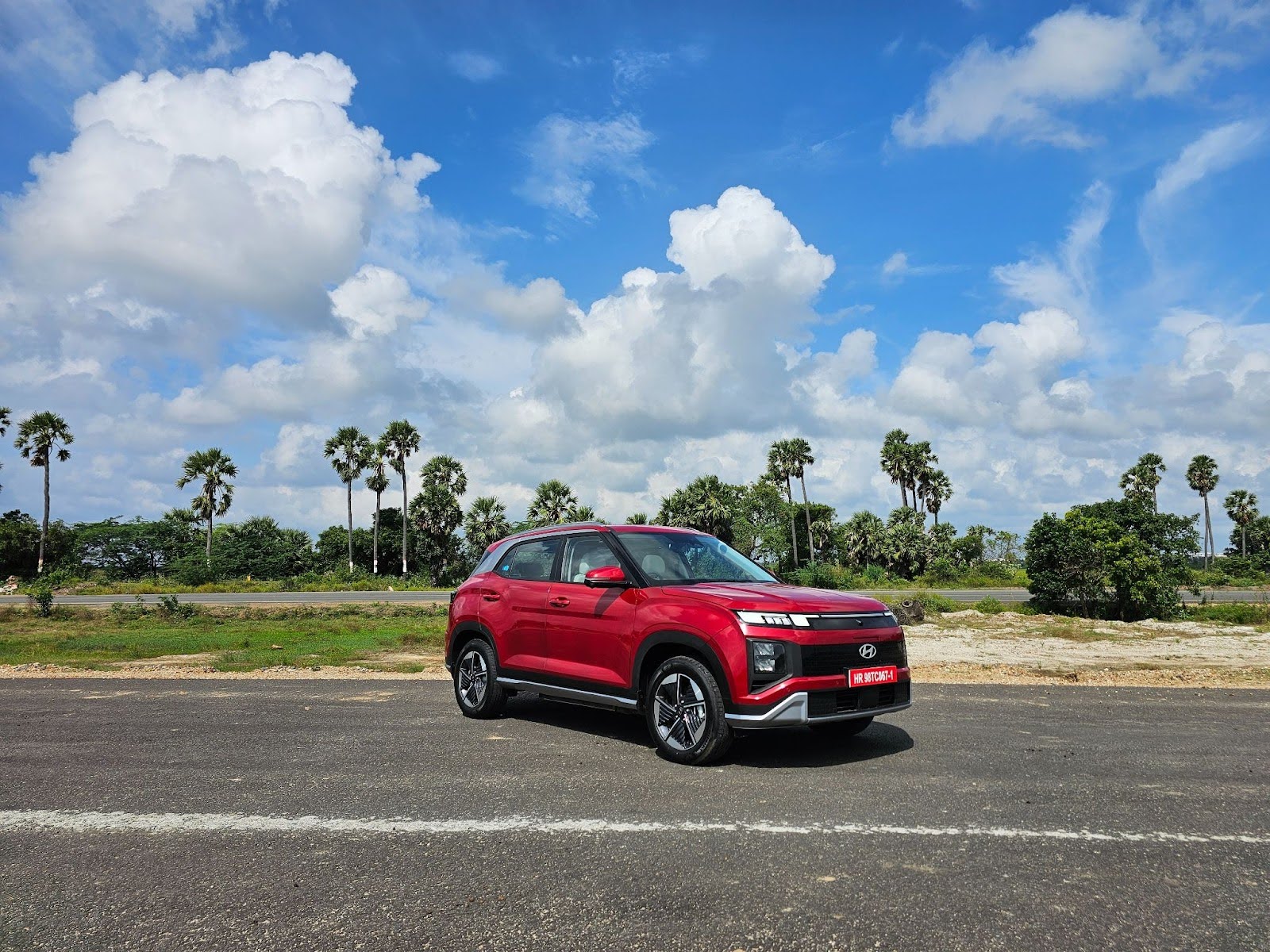Checking out the Creta EV in Chennai

Kushal Rajbhandari
· Mar 19, 2025

Some time back we got a chance to check out the Creta EV electric in person in Chennai, thanks to Hyundai Mobility India Limited and Laxmi Hyundai Nepal. It was a wonderful event where the Nepal media team got to spend time together and talk about EVs non-stop for three days straight with the scenic Chennai coastline and the blue sky in the backdrop.
Creta EV was launched in India at the Auto Expo 2025 on the 17th of January with the starting price at 18 lakhs INR. Hyundai Nepal is all geared up to launch it in Nepal on the 24th of March and it is one of the most awaited electric SUVs in the market right now.
Update: Pricing has been revealed for Creta EV in Nepal. All variants at launch come with the smaller 42kWh battery and 99kW motor with the higher power larger battery variant to come in a few months later.
| Variant | Price (NPR) |
|---|---|
| Executive | 51,96,000 |
| Smart | 54,96,000 |
| Smart (O) | 56,96,000 |
| Premium+ | 59,96,000 |
Let’s Talk About the Specs
| Feature | Details |
|---|---|
| Battery Options | 42 kWh (Standard Range) / 51.4 kWh (Long Range) |
| Battery Chemistry | Nickel Manganese Cobalt (NMC) |
| Range | 390 km (42 kWh) / 473 km (51.4 kWh) - ARAI |
| Charging Options | Fast DC Charging (10%-80% in 58 minutes) / 11kW Home AC Charger (~4 hours) |
| Motor Power | 99 kW (135 PS) / 126 kW (171 PS) |
| Torque | 320 Nm |
| Acceleration (0-100) | 7.9 seconds (Long Range model) |
| Top Speed | 180 km/h |
| Drivetrain | Front-Wheel Drive (FWD) |
| Dimensions | Similar to the standard Hyundai Creta |
| Boot Space | 433 liters |
| Wheel Size | 17-inch alloy wheels (varies by variant) |
| Infotainment System | 10.25-inch touchscreen with connected car tech |
| Safety Features | 6 airbags, ABS, ESC, Hill Start Assist, TPMS |
| Interior Features | Premium upholstery, panoramic sunroof, ventilated seats |
| Price (Ex-showroom) | Starting from 18 lakhs INR, 55 lakhs NPR (expected) |
TL;DR
Hyundai has done a wonderful job with the Creta EV and if the price is just right here in Nepal, we might have a new contender for the top position in the electric SUV segment, which until now was the BYD Atto 3. The competition is heating up with new EVs being launched almost every other week lately.
Initial Thoughts and Impressions
Platform
Not a pure EV platform. Many would have liked it if it was, but I’m not complaining here. Despite being a converted electric SUV, there’s nothing you’d find lacking in the Creta EV. No hump on the floor, V2L inside and out, even a frunk up front — which even many pure EVs lack. The Creta EV also has the same dimensions as the familiar Creta.
Battery and Range
Both battery packs — 42 kWh and 51.4 kWh — are NMC. Would LFP have been a better choice? Maybe, maybe not. Based on Kona EV's performance, we can expect a good city and highway range from the Creta EV as well.
We were able to easily get 330 km+ during the test drive with erratic driving in sports mode most of the time. Creta’s claimed range per kWh is already higher than that of the e-Vitara (LFP battery), thanks to NMC chemistry.

Ground Clearance
Arguably the most important aspect for anyone in Nepal. The Creta EV has an impressive 200mm ground clearance (unladen), even with a heavy battery under the floor. A proper SUV that can handle off-road driving without worrying about damaging the battery pack. The battery is visible hanging below the car when viewed from the side though.

Suspension Setup
The McPherson Strut with Coil Spring is on the stiffer side but absorbs most bumps and potholes comfortably. The car feels heavy, sturdy, and planted — even at high speeds.
Motor Power
Two motor options: 99kW and 126kW. We drove the 126kW variant on the highway and it had plenty of power. Instant torque rocketed the car to 100 kmph in under 8 seconds. Overtaking was effortless.
Due to tax structure in Nepal, the 99kW variant might be more common. Given our road conditions, even that might be more than enough.
Charging Time
Plenty of charging options:
- 11kW AC charger, first in the segment where all other EV SUVs are capped at 6.6/7kW AC charging. This does require a three-phase connection though. Full charge in 4 hours and 5 hours respectively for the two battery variants.
- 50kW DC support means drastically reduced charging time, even for the larger battery variant. 58 mins from 10% - 80%.
Boot Space
- 433 liters of boot space in the rear.
- 22 liters of frunk under the bonnet.
One thing missing: an electronic tailgate. With all the tech packed in, this omission feels odd.
Spare Tyre
Yes, it comes with a full-sized spare tyre! Something rare in EVs. No more relying on puncture kits.
Design Language
The design aligns with the latest Creta petrol/diesel models. Highlights:
- Pixel graphics on the front
- Horizontal LED headlamps and DRLs
- Pixelated reverse lights
- Active air flaps on front bumper
- Closed grille (no engine cooling required)
- Faux skid plates (front and rear bumpers)

Audio Visual Setup
- Two 10.25-inch displays
- Responsive infotainment system with wireless CarPlay & Android Auto
- Digital cluster shows range, battery %, consumption (in km/kWh)
- 8-speaker BOSE sound system
Final Thoughts
Hyundai is a well-established brand in Nepal. The Creta is already a fan favorite, and the Creta EV has a strong legacy to carry forward.
Laxmi Hyundai’s extended presence has helped them focus on service and build customer trust — something newer brands are still working on.
In a market like Nepal where price, after-sales service, and spare parts availability all matter, Hyundai Nepal is poised to make a big impact with the upcoming Creta EV.